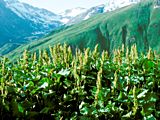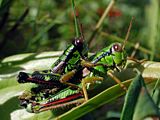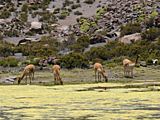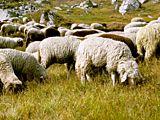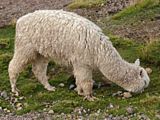N-cycling and nutrient budgets
By taking an agronomic point of view, N-cycling by biological processes in the Alpine (fixation, decomposition, mineralisation, uptake) is slow and limits biomass production. However, as can easily be demonstrated (Fig. 1), adding nutrients can rapidly destroy typical alpine vegetation and its robustness.
Plant litter decomposes slowly and often accumulates over several years. Thick organic layers are quite abundant, representing an important intermediate nutrient reservoir.
Winter is not a "dead season" for microbes! Under snow, soil rarely freezes and if it does, not to very low temperatures. Microbes are active under these conditions and release nutrients which accumulate over the dormant season.
Alpine soils have a high affinity to soluble nitrogen input. Tracer experiments with the 15N stable isotope have shown that half of the marker can be found almost 30 years after application. Alpine soils thus contribute to N retention and the clean water supply to the lowlands.
Animals play a key role in N-cycling. Grasshoppers alone have been found to harvest one fifth of annual graminoid production in an alpine heath. Rodents, such as voles, marmots or pikas, but also ungulates such as chamois, guanacos, etc. shape alpine ecosystems by both their intake and dung deposition.
Man has replaced wild ungulates in many areas with domestic animals, which therefore play an important role in nutrient cycling. It had been estimated that 2 % of every patch of alpine landscape receives dung deposition every year (50 years return time), an important contribution to alpine heathland nutrition and biodiversity.
